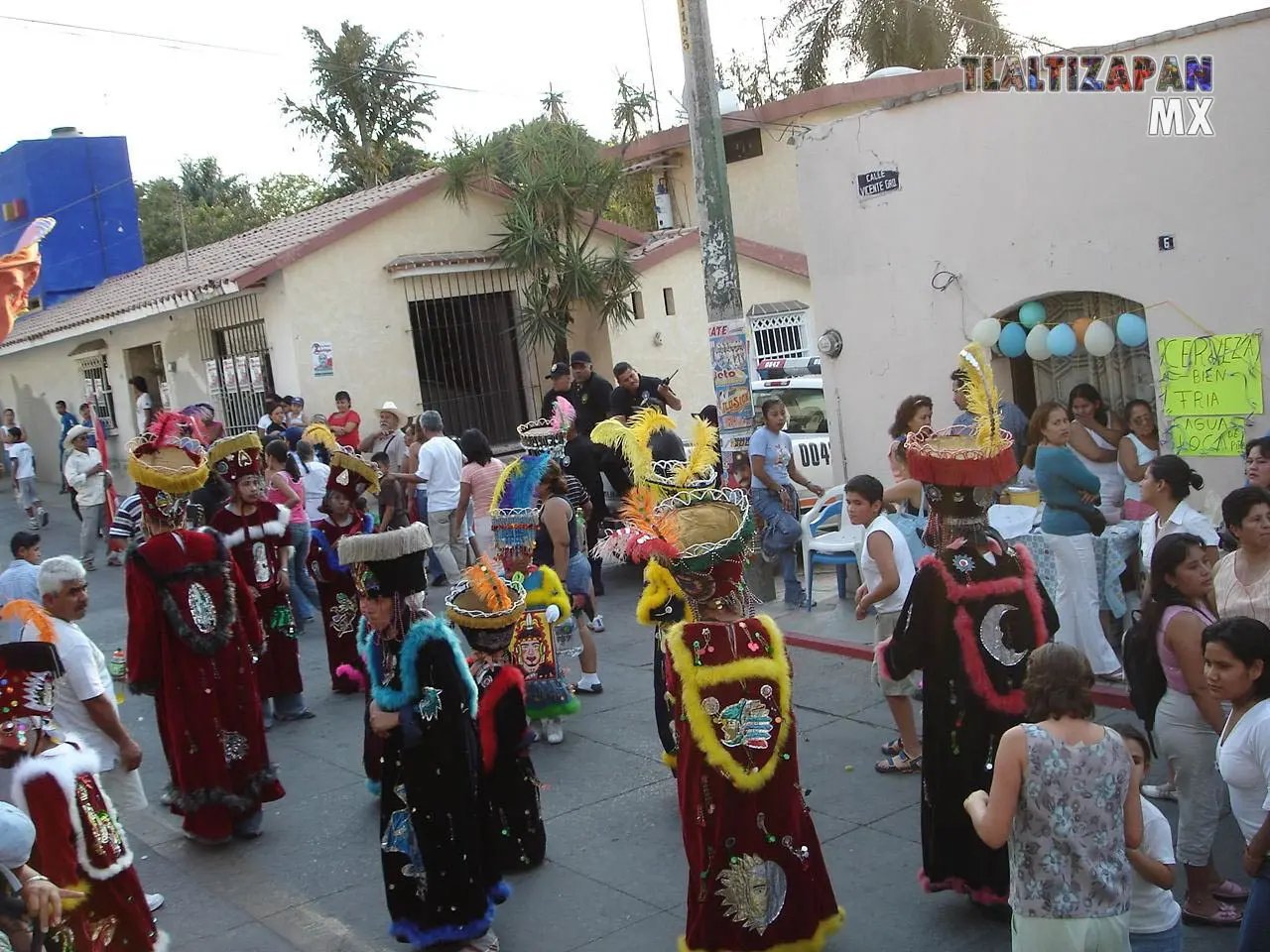Descripción:
Chinelo costumes are one of the most emblematic and recognizable traditions of the carnival in Tlaltizapán and other regions of the state of Morelos, Mexico. These costumes, known for their extravagance and color, are used by the 'chinelos', dancers who perform a particular dance during the festivities.
The chinelo suit is made up of several distinctive elements. One of the most notable features is the mask, usually made of cloth or cardboard, which completely covers the dancer's face. These masks have a big smile and googly eyes, giving them a happy, cartoonish look. The design of the mask is usually very colorful and decorated with feathers and sequins.
Another fundamental piece of the costume is the hat, which is large and decorated with feathers, ribbons and other decorative elements. The hat is a key component that adds height and majesty to the costume, making it even more impressive to look at.
The body of the costume is made up of a long, wide tunic, which is usually made of velvet and is decorated with elaborate embroidery, sequins and rhinestones. The colors of the tunic are bright and varied, and each slipper can have a unique design, making each suit an individual work of art. The tunic allows freedom of movement, which is essential for dance.
Finally, chinelo suits are complemented with gloves, boots or special shoes, and sometimes with additional layers that add more layers of color and texture to the ensemble. All of these elements together create a fascinating visual spectacle that is synonymous with the carnival festivity.
In short, chinelo suits are a vibrant expression of local culture and creativity. Every detail of the costume, from the mask to the tunic and hat, contributes to the creation of a figure that is both historical and festive. The chinelos, with their dazzling costumes, are a symbol of the joyful and community spirit that defines the carnival in Tlaltizapán.

